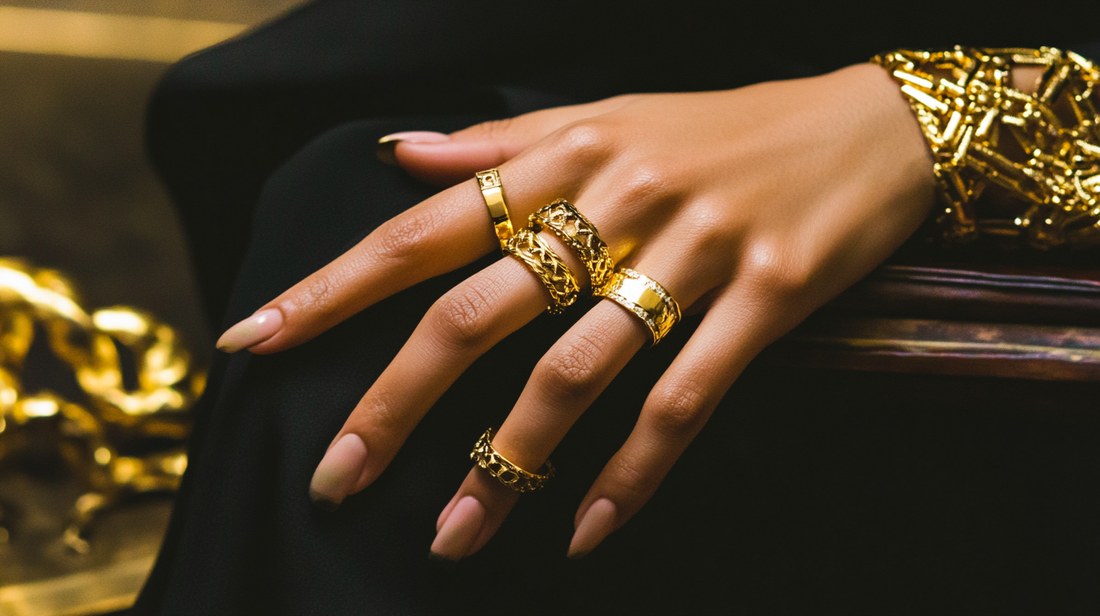
Choosing the Right Gold for Your Jewelry: A Comparison of 10K, 14K, 18K, 22K, and 24K
Share
When selecting the perfect engagement ring, the choice of metal often feels like a decision between different shades of yellow, white, or rose gold. However, if you choose gold, there are many options to consider—10K, 14K, 18K, 22K, and 24K each offer distinct characteristics. These choices will influence not just the appearance of your ring but also its durability, weight, and cost. Let’s break down what you need to know to select the right gold for your engagement ring.
Understanding Gold Purity: What Does Karat Mean?
When you choose gold for your engagement ring, a variety of factors should guide your decision, including your lifestyle, aesthetic preferences, budget, and skin sensitivity. The purity of gold is measured in karats (K), not to be confused with carats, which measure gemstone weight. Pure gold is 24K, meaning it’s 100% gold. Other common purities include 18K (75% gold), 14K (58.3% gold), and 10K (41.7% gold).
Higher karat gold means more gold content, while lower karat gold contains a higher percentage of alloy metals, such as copper, silver, or nickel. These metals affect the gold’s color, weight, and hardness.
Why Pure Gold Is Rare in Jewelry
Although 24K gold is the purest form, it’s not ideal for everyday jewelry, especially engagement rings. Gold is soft and malleable, making it prone to scratches and damage with regular wear. Alloy metals are added to create stronger, more durable gold, which can better hold gemstones and withstand daily use.
Exploring the Differences Between 10K, 14K, 18K, and 24K Gold
-
22K Gold: Close to pure gold with 91.7% purity, 22K gold has a beautiful bright yellow hue. However, it’s too soft for gemstone settings and is best suited for simple pieces like wedding bands.
-
18K Gold: Offering a warm, rich color, 18K gold is the most popular high-purity gold used in fine jewelry. With 75% gold content, it strikes a balance between purity and durability. Though it’s more prone to scratching, it’s a great option for those seeking luxury without the high risk of skin irritation.
-
14K Gold: This is the most common choice for engagement rings and wedding bands in the U.S. With 58.3% gold, 14K gold offers great durability, is more affordable than higher-karat gold, and resists scratching. However, it may cause irritation for those with certain metal allergies.
-
10K Gold: As the least pure gold allowed to be called “gold” (41.7%), 10K gold is the most durable and affordable option. However, its pale yellow color and high alloy content make it less desirable for those looking for a rich gold appearance. It’s also more likely to cause skin reactions.
Choosing the Best Gold for Your Jewelry
Your perfect gold choice depends on factors such as personal taste, budget, and lifestyle. For many, 14K gold offers the ideal balance of affordability, durability, and aesthetic appeal. It’s the most widely used gold in engagement rings because of its strong mix of gold and alloy, providing a classic gold appearance without the higher cost of 18K gold.
If you’re seeking a deeper golden hue, 18K gold is a beautiful choice, offering the richness of 75% pure gold. While it’s more expensive and less durable than 14K, it is also more hypoallergenic, making it a great option for those with sensitive skin.
For a close-to-pure gold experience, 22K gold gives a vibrant yellow color but lacks the hardness needed for gemstone settings. It’s more commonly used in wedding bands that won’t be subject to the wear and tear of daily life.
All of these gold options can be crafted from recycled metals, which are a more ethical and environmentally friendly choice compared to newly mined gold.
Finding the right gold for your engagement ring may seem complex, but ultimately, the best choice is one that aligns with your personal preferences and lifestyle. Whether you opt for the durability of 14K or the luxurious feel of 18K, you can’t go wrong if you love the final result on your finger.